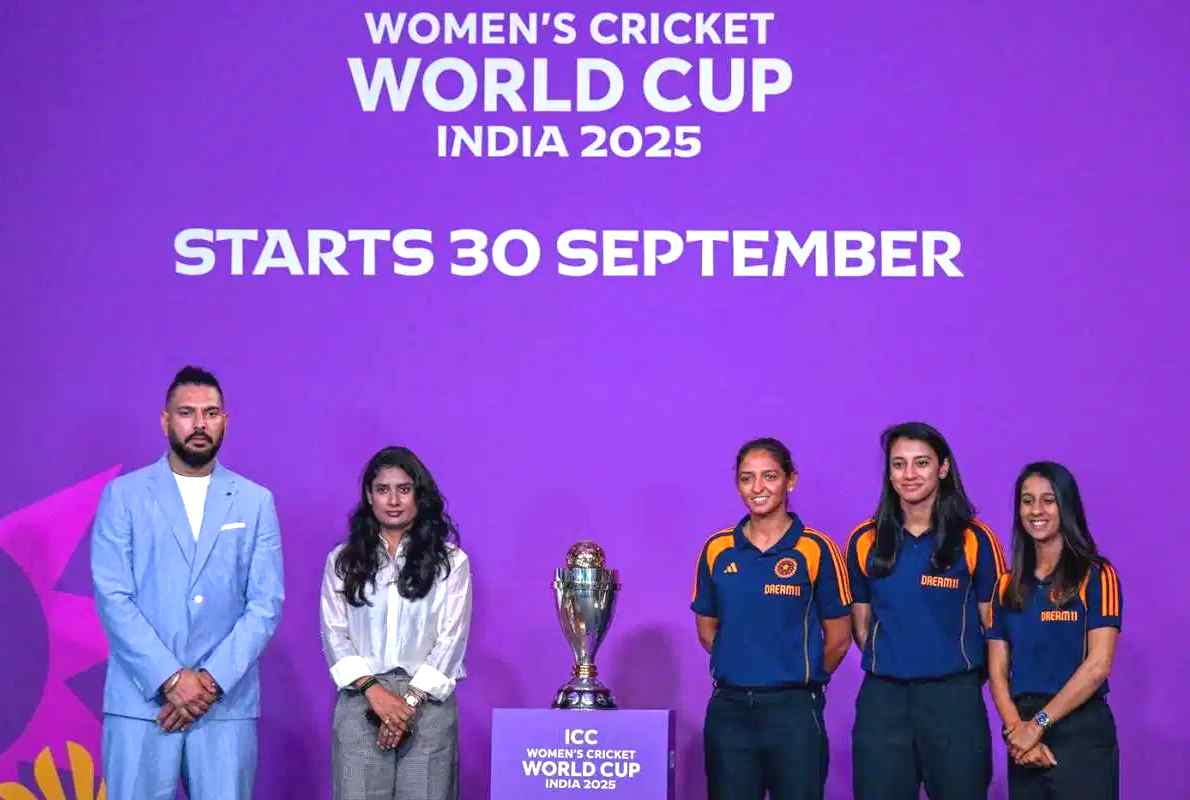With USD 13.88 million prize pool, Women’s World Cup 2025 overtakes Men’s CWC 2023, signaling women’s cricket’s rising prominence globally.

The ICC Women’s Cricket World Cup 2025 has set a new benchmark in sport by announcing a record prize pool of USD 13.88 million, which surpasses the total prize money of USD 10 million for the Men’s Cricket World Cup 2023. This development marks a key milestone in the evolution of women’s cricket, both in terms of financial recognition and the growing prominence of the women’s game globally.
For decades, cricket’s prize money and commercial focus heavily favoured men’s tournaments, often leaving women’s cricket trailing far behind in financial rewards and visibility. But the 2025 edition, jointly hosted by India and Sri Lanka starting September 30, signals a change, one where women’s cricket is finally commanding respect, investment, and support on par with its male counterpart.
ICC sets landmark purse for Women’s World Cup
The USD 13.88 million prize pool is nearly four times the amount awarded during the last Women’s World Cup in New Zealand in 2022, when the total purse was USD 3.5 million. The winners of the 2025 tournament will pocket USD 4.48 million, which is 112% more than the 2022 champions received, while runners-up will earn USD 2.24 million, a 273% increase over the previous final’s prize money. Semi-finalists are guaranteed USD 1.12 million each, a big rise from USD 300,000 in 2022.
For each group-stage win, teams will earn a further USD 34,314. At the end of the group stage, the teams that finish fifth and sixth will be awarded USD 700,000 each, while those who finish seventh and eighth will earn USD 280,000.
In contrast, the 2023 Men’s Cricket World Cup had a prize pool of USD 10 million, with USD 4 million awarded to the winners and USD 2 million to the runners-up. The Women’s World Cup prize pool surpassing this figure for the first time in history is a landmark for gender equality in cricket’s commercial landscape.
Historically, the gap between men’s and women’s cricket prize money was vast. In the earlier decades, women’s format prizes were often mere fractions of those awarded in men’s tournaments, reflecting a sport in which women’s cricket was largely marginalized. The 2025 escalation depicts a dramatic shift in mindset and priorities by the ICC and stakeholders.
Read More: Top 5 players to watch out for in Women’s World Cup 2025
Growing recognition of women’s cricket
The massive prize money increase is not an isolated incident but part of a broader upswing in women’s cricket, which are led by rising global interest, commercial sponsorship, and media coverage.
Worldwide, women’s cricket has moved from the sidelines to front and centre, with the Women’s Premier League (WPL) in India, the Women’s Big Bash League (WBBL) in Australia, and The Hundred in England becoming major sporting events. These leagues offer women players professional contracts, intense competition, and crucial visibility, fostering a pipeline of talent and fan engagement.
Viable professional opportunities in domestic leagues along with international tournaments have allowed many women cricketers to pursue the sport as a full-time career, which was unimaginable a decade ago.
ICC Chairman Jay Shah’s perspective
ICC Chairman Jay Shah has hailed the 2025 Women’s World Cup as a ‘defining moment’ for women’s cricket. “Our message is simple, women cricketers must know they will be treated on par with men if they choose this sport professionally. The uplift underscores our ambition to deliver a world-class ICC Women’s Cricket World Cup and to inspire the next generation of players and fans. Women’s cricket is on a remarkable upward trajectory, and with this step we are confident the momentum will accelerate,” Jay Shah said in a statement.
Read More: Schedule of 2025 Women’s World Cup
Breakdown of a grand prize money pool for #CWC25 🏆
— ICC (@ICC) September 1, 2025
More ➡️ https://t.co/oDGTG3zyx6 pic.twitter.com/OMzeveP3YA
Global growth of women’s cricket
The rise of women’s cricket is palpable worldwide. From traditional powerhouses like Australia, England, and India to emerging cricket nations, women’s teams are increasingly competitive and visible. ICC’s focused efforts include promoting the game in associate countries such as Bangladesh, Thailand, and the USA, expanding women’s participation beyond historical strongholds.
The proliferation of women’s T20 leagues is a key factor boosting the sport. The WPL, in particular, launched in India, has generated tremendous enthusiasm and commercial interest, becoming one of the largest women’s T20 leagues globally. Other leagues include the WBBL in Australia, The Hundred in England, the Women’s Caribbean Premier League, and new competitions in South Africa, New Zealand, and Pakistan.
The way forward
The record prize money for the Women’s World Cup 2025 is definitely a clarion call for equality, investment, and continued growth. To sustain this momentum, the ICC and cricket boards must continue developing grassroots-level programs, invest in women’s leagues, and enhance media coverage to ensure visibility beyond marquee events.
Empowering young girls and emerging talent with access to training, infrastructure, and professional pathways is critical. Commercial partnerships must deepen, while broadcasters need to maintain commitment to women’s cricket’s extensive coverage.
Looking beyond 2025, the challenge is to build a robust, sustainable ecosystem that nurtures talent, rewards excellence, and expands fanbases.
Read More: WWC 2025: India Women squad analysis & Probable XI

